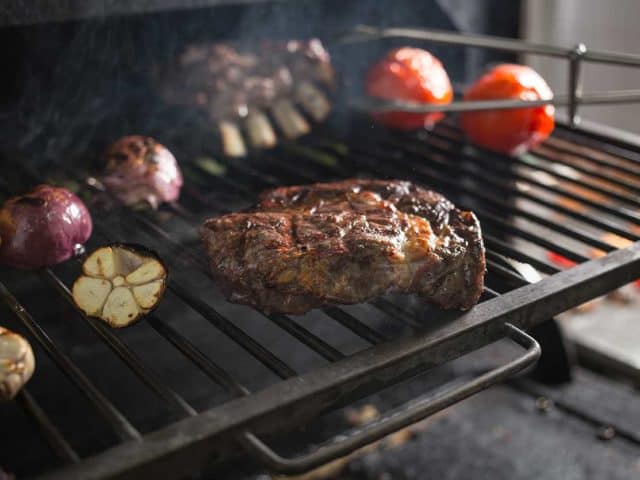
Whether it’s the ultimate burger or the perfect steak, these tips from our experts in the Butcher Shop, will help ensure you wow friends and family, every time.
Tip 1. Starting
Before you heat up the grill, remove the meat from the fridge 20–60 minutes before cooking, this allows heat to evenly transfer throughout the meat while its cooking. Skipping this step means your meat will cook unevenly.
Tip 2. Seasoning
Naturally, personal tastes differ, but if you’re in doubt, going simple allows the meat to shine. Try seasoning both sides with freshly ground black pepper and coarse-grain Kosher or sea salt. A coarse salt will give you that bright salt crunch and flavor enhancement without too much sodium.
Tip 3. Searing
Searing the meat first—on high-high heat—locks in the flavors. Look for brown caramelization on both sides before. A cast-iron skillet is ideal for this step because it holds high heat and disperses it evenly.
Tip 4. Temperatures for Grilling Steak
Investing in a meat thermometer will help you cook your steak to perfection! The most important thing to remember about temperature is to pull your meat from the heat when it is 5°F cooler than you want it. For example, if you want a medium steak, pull it from the grill or the pan when it reaches 140°F. This is true for any steak, whether it’s ¾- or 3-inch thick.
- Rare: 130°F
- Medium-rare: 135°F
- Medium: 145°F
- Medium-well: 150°F
- Well-done: 160°F
Tip 5. Give It a REST
Tented or not—when you pull your meat from the heat, allow it to rest for at least 5 minutes. This allows the muscles to relax and the juices to flow out—that’s when you know it’s ready. Then for meaty magic, pour those juices over the steak and serve!
What If You Don’t Have a Grill?
Don’t let the lack of a grill stop you from creating steak perfection in your own kitchen. After searing and caramelizing the meat on both sides, you can turn the heat down and continue to cook in the skillet. Or you can put it on a broiling pan and cook it in the oven at 375°F. (If you don’t have a roasting pan, you can use a cooling rack on a cookie sheet to catch the drippings.) Whether pan or oven cooked, you’ll still want to test the doneness with a meat thermometer.
Because grass-fed beef is leaner than grain-fed beef, it has less fat and doesn’t retain its juices as much. This results in faster cooking times. Using your meat thermometer earlier than you think you need to can help.
Did you know?
Every Sprouts Butcher Shop has a trained butcher who’s happy to custom cut steaks to your favorite thickness or share their own great grilling tips. After all, they love meat as much as you do. And, if you need a specific cut for a special occasion, they can help with that too!
 Whether it’s the ultimate burger or the perfect steak, these tips from our experts in the Butcher Shop, will help ensure you wow friends and family, every time.
Whether it’s the ultimate burger or the perfect steak, these tips from our experts in the Butcher Shop, will help ensure you wow friends and family, every time.

 VIEW ALL
VIEW ALL



